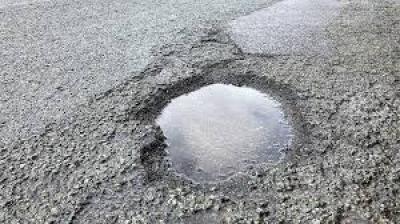Oceania nation 93 percent renewables energy while MPs lured by trans-Atlantic careers
Dazzled by the prestige of global assemblies and their high minded objectives there has emerged even in recent weeks a suspicion that many in New Zealand politics even see their futures in these exalted organisations instead of coping with the nation’s down-to-earth issues centred as they are on crime, homelessness, cost of living and balance of payments.
The problem for the everyday inhabitants is that this higher calling takes the form of politicians of most stripes claiming that any faltering in imposing on their taxpayers extreme and costly climatic political measures would be interpreted as “dragging the chain.”
Mid-year New Zealand’s energy consumption reached 93 percent from renewables, almost edging out the world champion Iceland..
Nurturing the guilt factor and thus their international opportunities this was hushed up.
Both parties are now frantically back pedalling on their exaggerated and distorted undertakings to these international organisations.
The scheme now is to pass the responsibility (i.e. the buck) to local authorities in the matter of plastering over the countryside wherever the opportunity arises with swathes of pine plantations.
Being shallow rooted and quick growing these are vulnerable to being swept away by the very climatic shifts that the plantations were somehow supposed to avert.
The failure of the government’s last two offset trade units auctions has contributed to the need to hedge, offset, responsibility for these very offset plantations.
At the outset New Zealand went overboard in trumpeting its virtuosity in conforming to international standards. Discarding other alternatives it went all-out on the pine plantations and this signalled the institutional anxiety to conform and to be top-of-the-class internationally.
This can now be seen to have had the direct opposite of the intended effect.
Examples include the pitted and pot holed roads created by the immense road trains carrying the logs.
There is the matter of the government’s direct financial incentives to acquire electric cars which are substantially heavier than the fuel version, and thus contribute to the pot hole outbreak.
The Labour-led government early burst of virtuosity in choking oil and gas exploration and which was materially responsible for the nation’s only oil refinery closing has had the effect of eliminating the local supply of the now badly-needed petroleum-based road surfacing additives required to cope with potholes.
Around half of one percent only of New Zealand is actually built over. With the exception of mountain range summits the rest is covered by vegetation of various descriptions.
The existing natural vegetation includes native, indigenous trees. It is only a few years ago that these were considered so sacred that use of these trees in anything so frivolous as wall coverings in government buildings caused these coverings to be to be ripped out.
How did the pine plantations replace these indigenous (and durable slow growing, deep rooted)) trees in the offset plantation pantheon?
The current official tilt centres on “community” (i.e local government) involvement in the pine plantations will be viewed as a poisoned chalice by these same district and regional administrations.
Official estimates range from a taxpayer exposure of $3 billion to $23 billion to the zero campaign. After the mid year disappointing auction with its carry over from the previous disappointing auction the notion of an exposure of even $30 billion is mooted.
It is not long ago that pine plantations were being cleared for dairy farms instead of the quite recent reversal now in which dairy farms are converted into pine plantations.
With their costly internationalist yearnings the local show-off politicians might take note for example that the OECD average of seven percent of social housing to their total housing stock compares to only three percent in New Zealand.
Proclaimed measures notably the pine one to prepare for the realities of warming sea temperatures and thus the southern migration of the hurricane season instead only drastically added to the problem.
Local government and its ratepayers will be wary of taking up co-governance on this once-fanfared scheme to curry international favour.
They will be aware too of the way in which local authorities now expected to shoulder the official pine plantation burden must cope with reducing “wilding” pine which for reasons still to be explained remain outside internationally-sanctioned respiration calculations, as does indigenous vegetation and indeed grassland too.
How exactly do the unchallengeable international referees in this social justice venture distinguish between a pine tree that happens to be just growing and one that is part of one of their certified special purpose plantations?
Unexplained in the reverence to anything from the multilaterals is the iron-dome formulation of the nation’s contribution of 0.15 percent to world carbon dioxide. In this formula most of this existing respiring cover was eliminated in a calculation that seemingly could only accommodate an authorised and artificial counter balance by the planting of the foreign pines.

